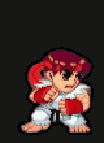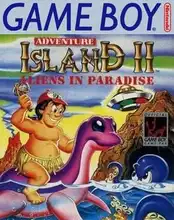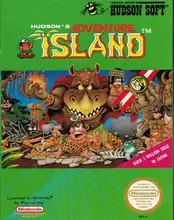Remember that feeling? The frantic dash across a tropical landscape, the constant hunt for fruit, the dread of that depleting energy bar? If you grew up with the Nintendo Entertainment System, chances are you spent some quality (and frustrating) time with Adventure Island. More than just a simple platformer, Master Higgins' debut adventure became an iconic test of reflexes and memory.
Let's take a trip back to those pixelated shores and rediscover what made this Hudson Soft gem a classic, even if it made us want to throw our controllers.
The Core Challenge: Running on Fruit and Faith
At its heart, Adventure Island is a side-scrolling platformer where you control the perpetually shirtless Master Higgins on a quest to rescue his girlfriend, Tina (or Princess Tina, depending on who you ask), from the clutches of the evil Witch Doctor. Simple premise, brutal execution.
The most defining mechanic, and arguably the source of most player anxiety, is the constantly draining energy meter represented by a string of fruit at the top of the screen. Stop running, and you're dead. Don't grab fruit, and you're dead. It's a constant, high-stakes race against time, forcing you to keep moving forward through the levels.
Your primary interaction with the world involves running, jumping over gaps and enemies, and smashing eggs. This simple loop is deceptively deep, requiring precise timing and spatial awareness.
Axe, Fireballs, and Hidden Eggs
While Higgins starts defenseless, you quickly find your first weapon inside a helpful egg: a stone axe. This lets you finally fight back against the prehistoric creatures and other baddies standing in your way. Find another specific egg, and you might upgrade to the more powerful magical fireballs.
Eggs are crucial, often containing weapons, extra fruit, or even temporary invincibility in the form of a skateboarding angel (the Honey Girl). But beware! Some eggs hide less desirable items, like the dreaded eggplant that drains your energy faster. The game also loved hiding invisible eggs in seemingly empty spots, rewarding curious players with bonus items or even warp clouds to skip levels.
A Tropical Gauntlet: Why It Was So Hard
Let's not sugarcoat it: Adventure Island is tough. Like, really tough. The difficulty stems from several factors:
- The Energy Meter: This relentless timer adds immense pressure to every jump and every enemy encounter.
- Instant Death: Touching almost anything hostile, falling into a pit, or letting your energy hit zero means instant death.
- Enemy Placement: Enemies often appear in tricky spots, requiring perfect jumps over or attacks through them.
- Boss Fights: Each world ends with a boss fight against the Witch Doctor in various forms, requiring you to learn patterns and hit his head multiple times, often while dodging projectiles.
This combination created a game that demanded memorization and flawless execution, a hallmark of many challenging NES titles.
Beyond the First Island: Sequels and Legacy
What many players might not know is that Adventure Island has a fascinating origin. It started life as a direct port of Sega's arcade game Wonder Boy. Hudson Soft acquired the rights but had to replace the main character, leading to the creation of Master Higgins (based on Hudson Soft employee Toshiyuki Takahashi, known for his fast button-mashing).
While the Wonder Boy series evolved into action RPGs, the Adventure Island sequels largely stuck to the challenging platforming formula. Games like Adventure Island II and Adventure Island 3 on the NES added beloved features like dinosaur companions with unique abilities, item inventories, and world maps, arguably improving upon the original while retaining the core feel. The series continued on SNES, Game Boy, and other platforms.
Today, the rights to the series are held by Konami after their acquisition of Hudson Soft. While new games are rare, the original NES classic and its sequels live on through re-releases on virtual consoles and are often available via emulation for those looking to revisit the challenge. You can sometimes find official re-releases on platforms like the Wii/Wii U Virtual Console, or explore options like online browser emulators or projects like DOSBox for PC ports if they exist (though the NES version is the most iconic).
The Enduring Charm
Despite its punishing difficulty, Adventure Island holds a special place in the hearts of many retro gamers. Its vibrant graphics, catchy (if repetitive) music, and unique gameplay mechanics created a memorable experience. It's a perfect example of the kind of challenging-yet-addictive design that defined the NES era. Booting it up again is an instant dose of nostalgia, reminding us of a time when mastering a game meant practice, patience, and a whole lot of perseverance.
Whether you conquered it back in the day or are curious to test your mettle now, Adventure Island remains a classic worth revisiting. Just make sure you stock up on virtual fruit!
FAQ
Q: Who is Master Higgins? A: Master Higgins (Takahashi Meijin in Japan) is the main character of the Adventure Island series. He was created by Hudson Soft and based on their real-life employee Toshiyuki Takahashi, known for his incredible button-mashing speed.
Q: Is Adventure Island related to Wonder Boy? A: Yes! The first Adventure Island game is a direct port of Sega's arcade game Wonder Boy. Hudson Soft acquired the rights to port the game but had to create a new character, Master Higgins, as Sega owned the rights to the original Wonder Boy character.
Q: How many Adventure Island games are there? A: There are numerous games in the Adventure Island series across various platforms, including four on the original NES, sequels on Game Boy, Super NES, TurboGrafx-16, Wii, and mobile devices.
Q: Why is Adventure Island considered difficult? A: The game is known for its high difficulty due to the constantly draining energy meter, instant deaths from enemies and hazards, and challenging level design that requires precise platforming and timing.


